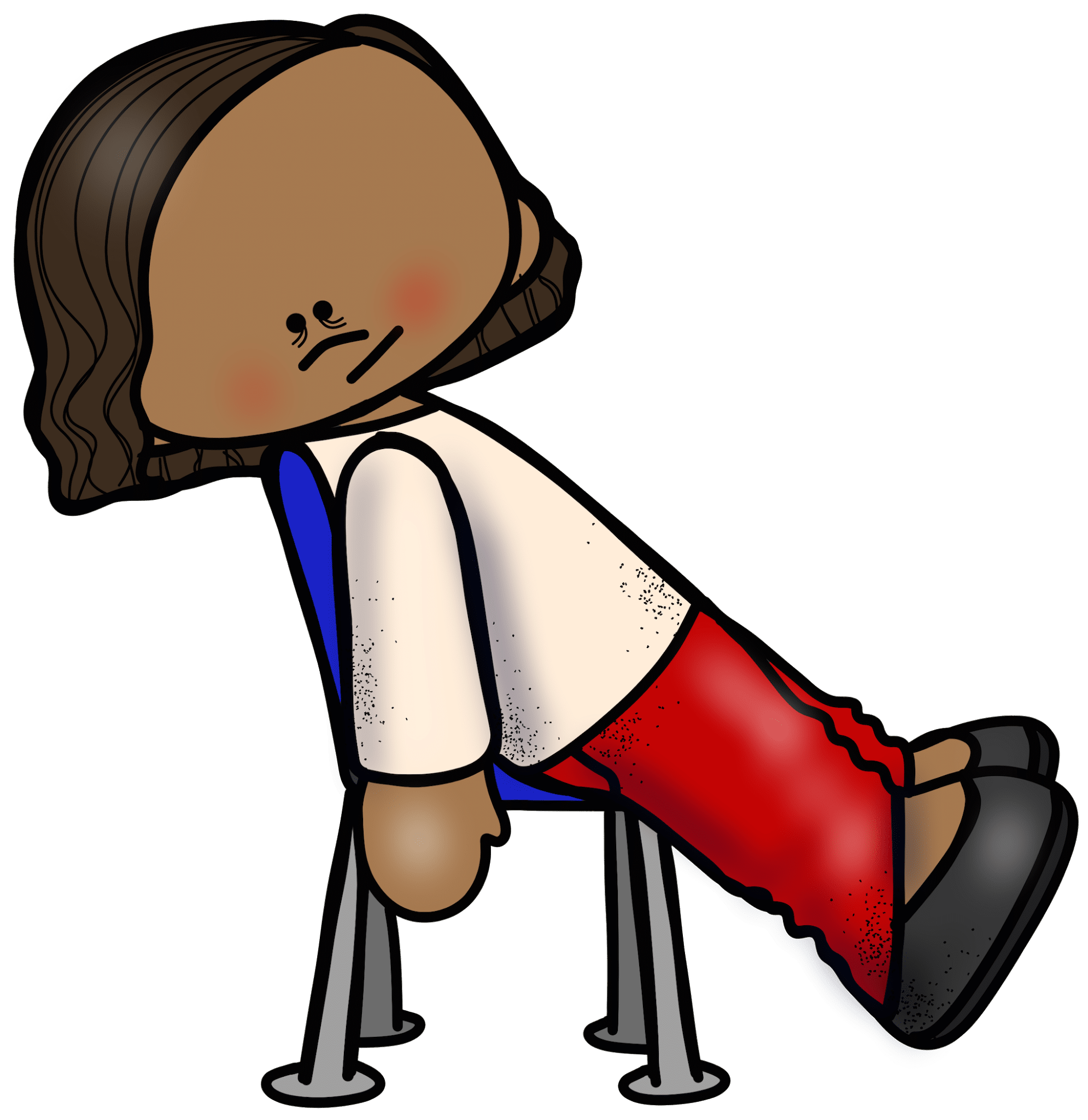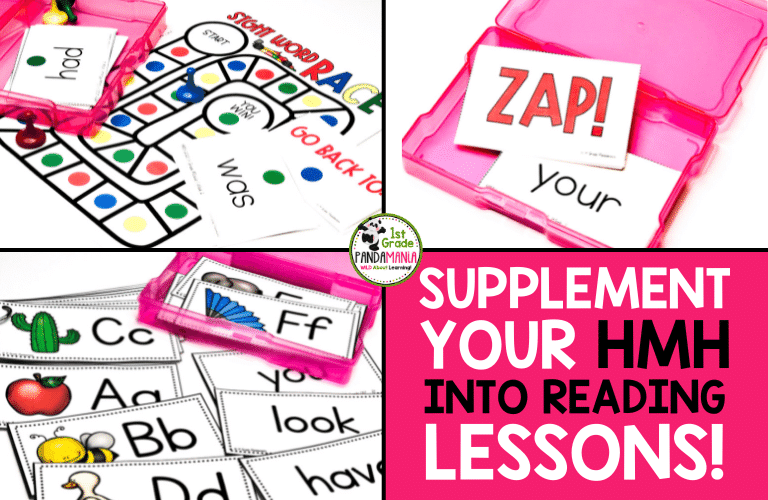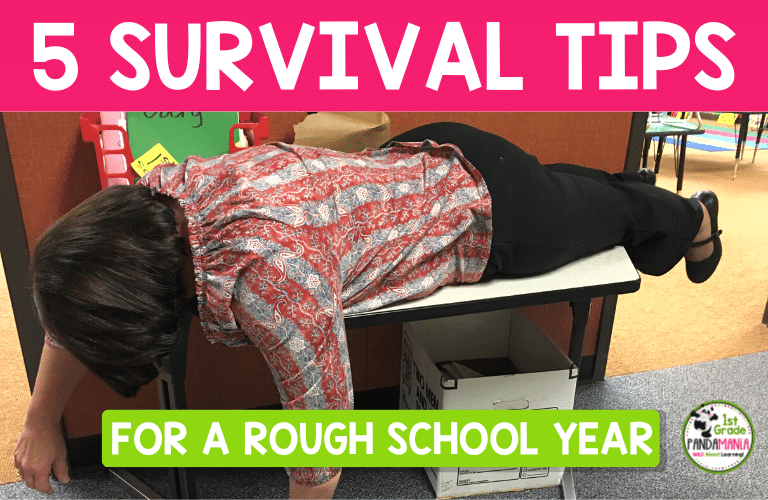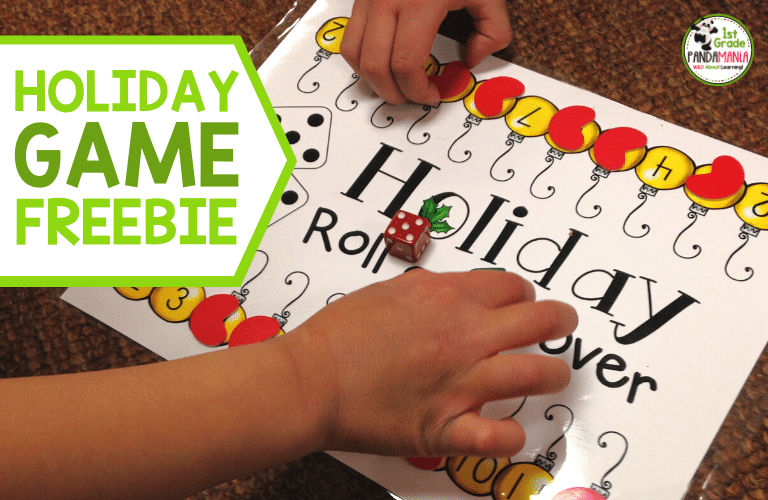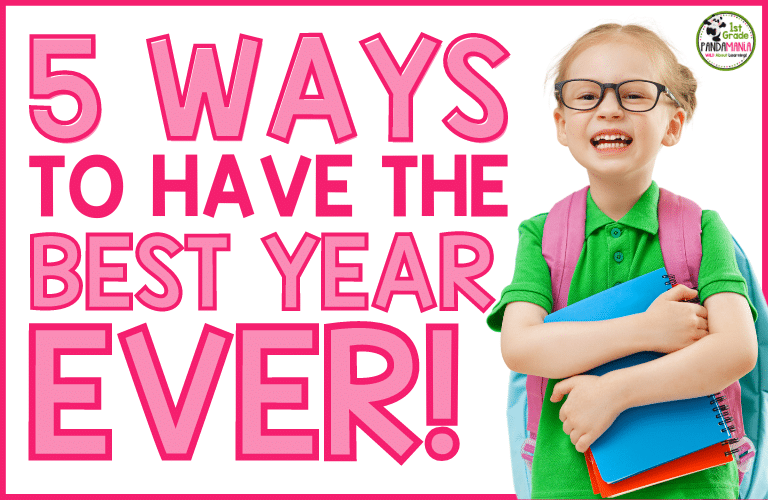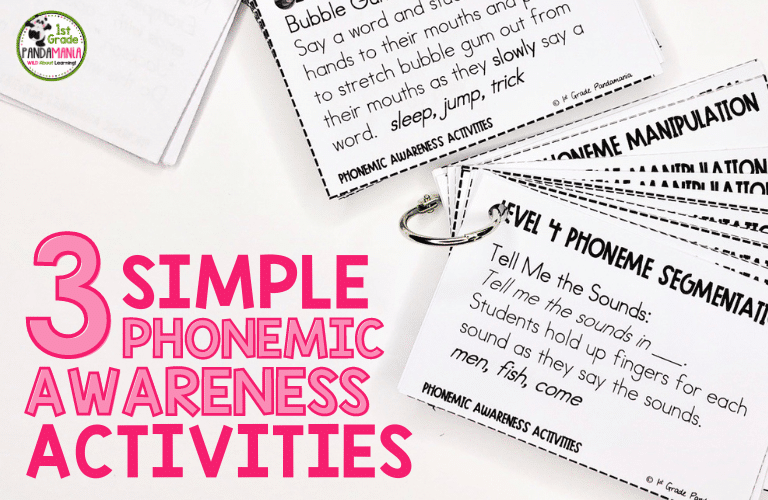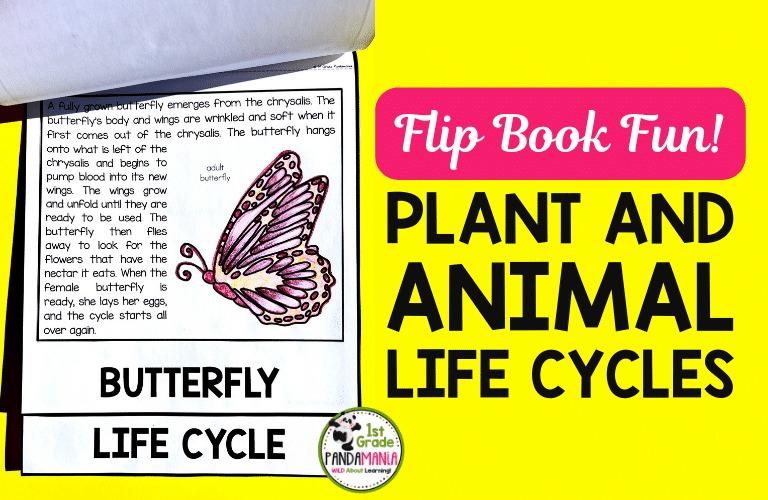Learn How to Easily Prompt and Guide Your Students Now!
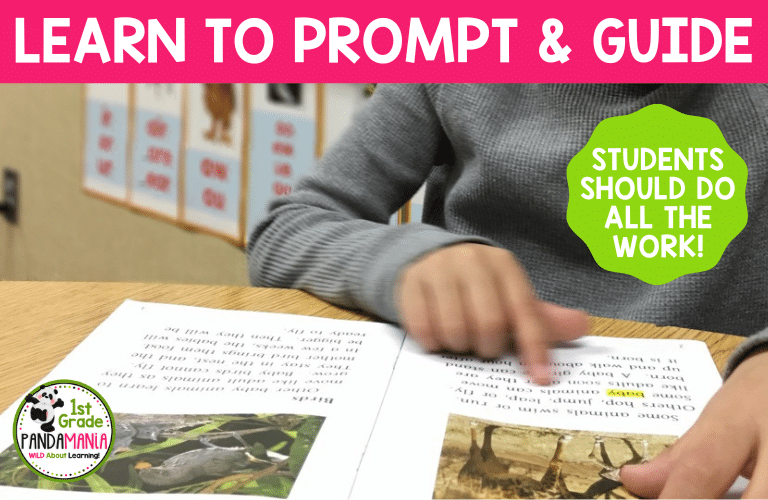
Why is it so important to prompt and guide?
Too often we teachers go home feeling like we have read hundreds of books, written dozens of essays, and solved pages and pages of math problems. By ourselves. It’s because we’ve done all the work…so exhausting!
No wonder we are exhausted by the end of the day. But shouldn’t the students be the ones worn out from all their hard work? That’s why it’s so important to learn how to prompt and guide your students so THEY do all the work!
The more WE do, the less THEY do. And the less they do, the less they learn!
Scaffolded instruction is a great way to gradually release the responsibility from the teacher to the student. Perhaps you’ve heard of I Do, We Do, You Do.
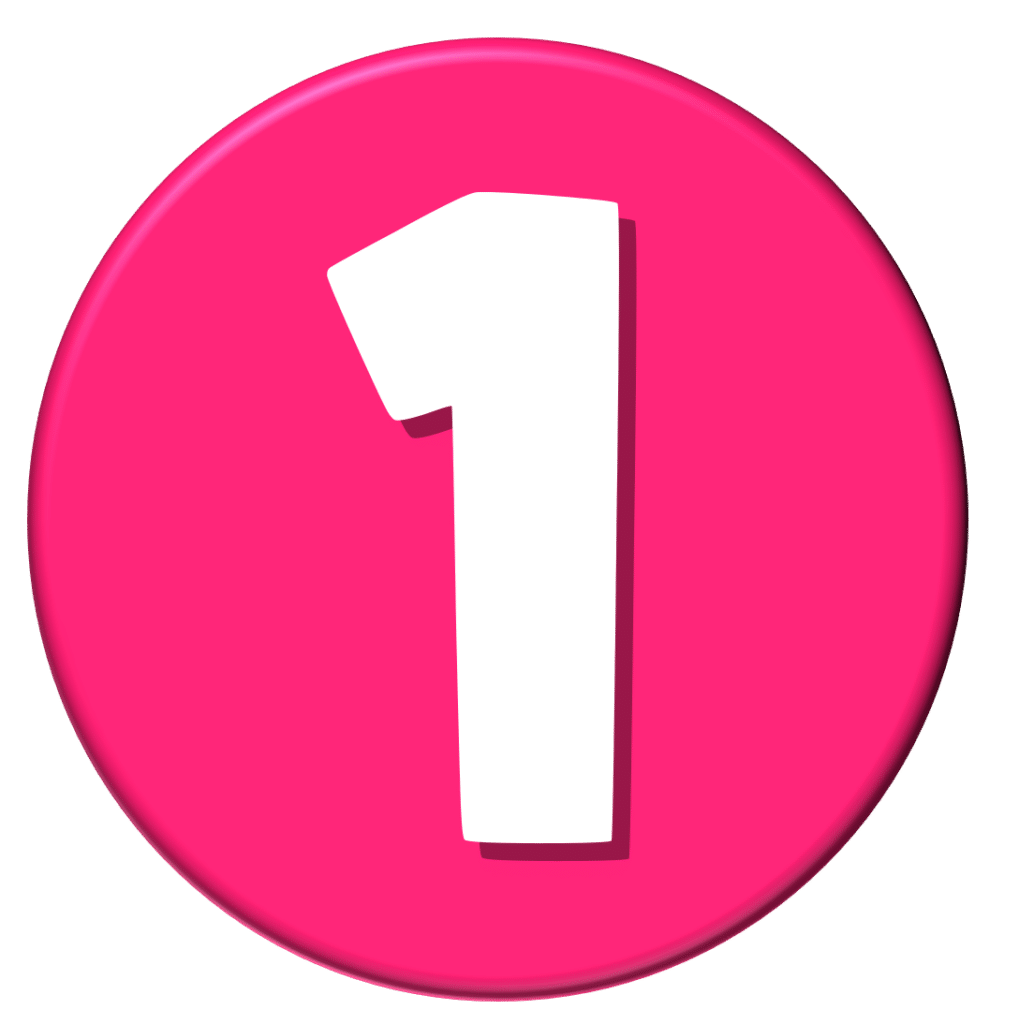
I Do: Instruction
This is where the teacher uses direct instruction to explicitly teach and model.

We Do: Guiding
This is where the teacher uses guided instruction to practice and apply skills and concepts alongside students. The “We do” instruction is where the teacher guides students!
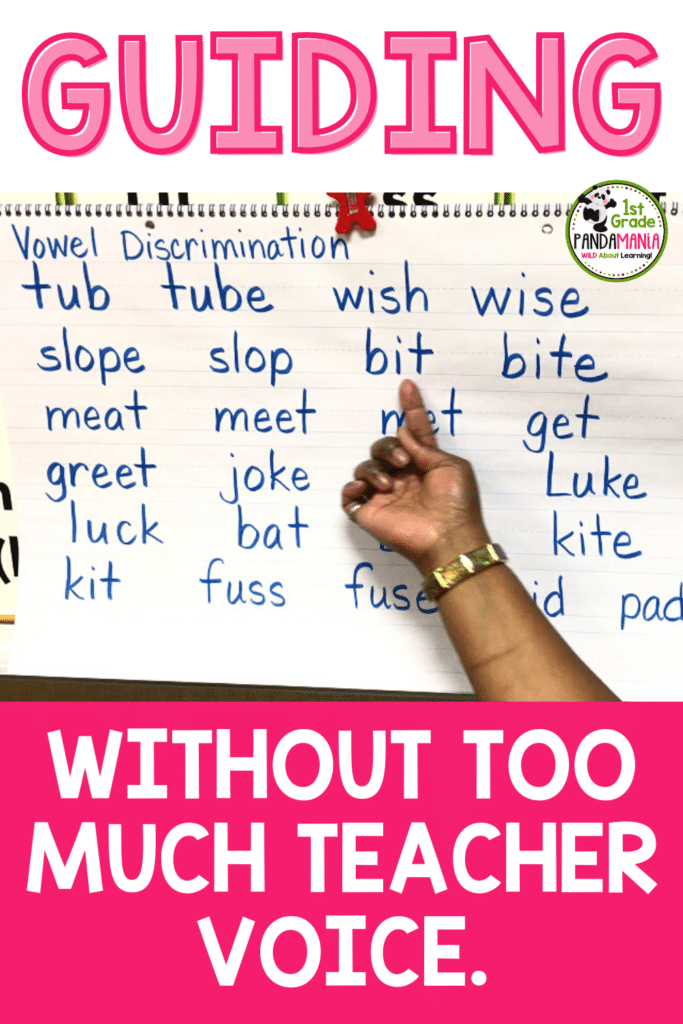
For example: When students are sounding out a word, the teacher may prompt them with the word “sound.” This one-word prompt encourages students to attack the word sound by sound and the teacher’s voice is mostly off so students are doing all the thinking and the work to apply what they have learned.

You Do: Independence
This is where students are ready to apply what they have learned independently.
Most of us have the “I Do” and the “You Do” down just fine. It’s the “We Do” where the teacher needs to guide without too much teacher voice. We can support students without giving it all away by backing off a little and guiding them while allowing them to practice and apply a skill. That way you can jump in only when needed. Use one or two-word prompts without long explanations…leaving students to do all the work!
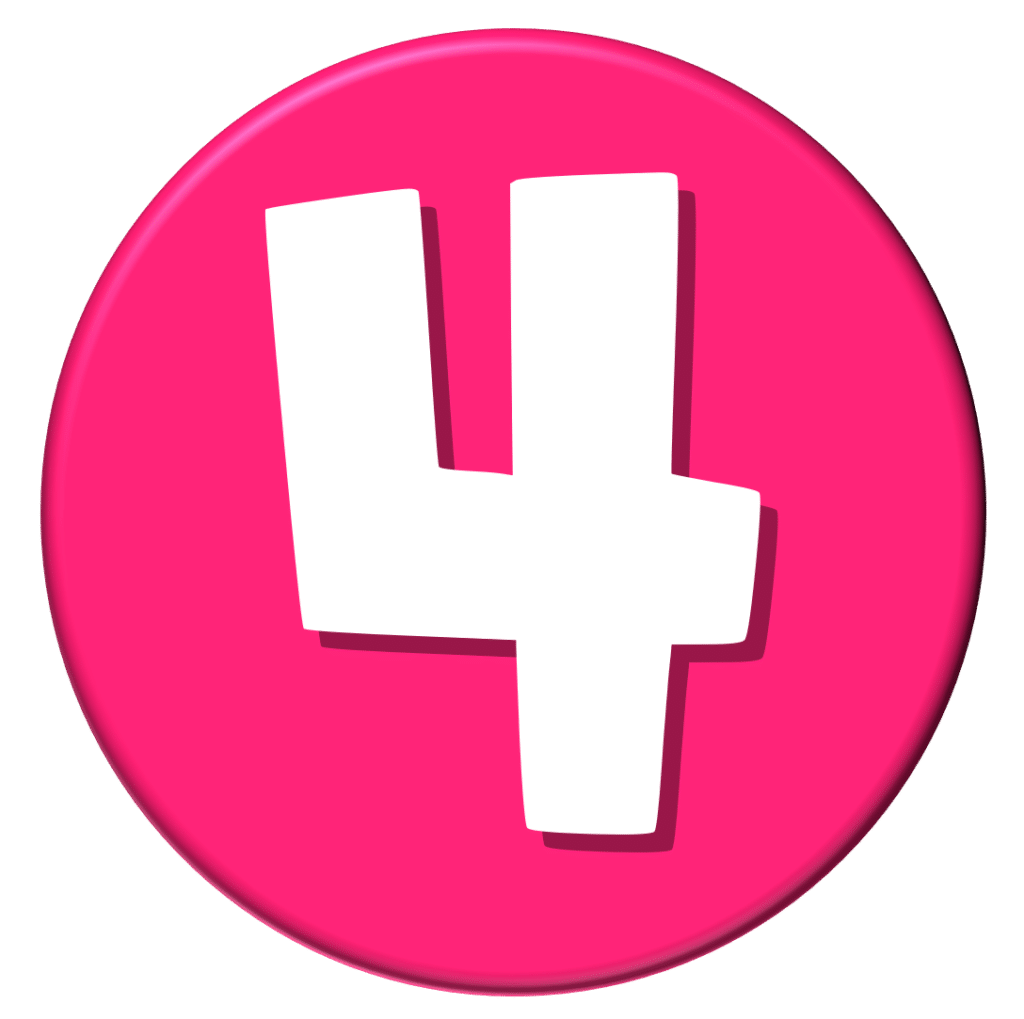
How to apply our prompt and guide instruction
Students have had instruction on the new sight words and sounds for the week. Now it’s time for “We Do” instruction where students apply the skill with teacher guidance.
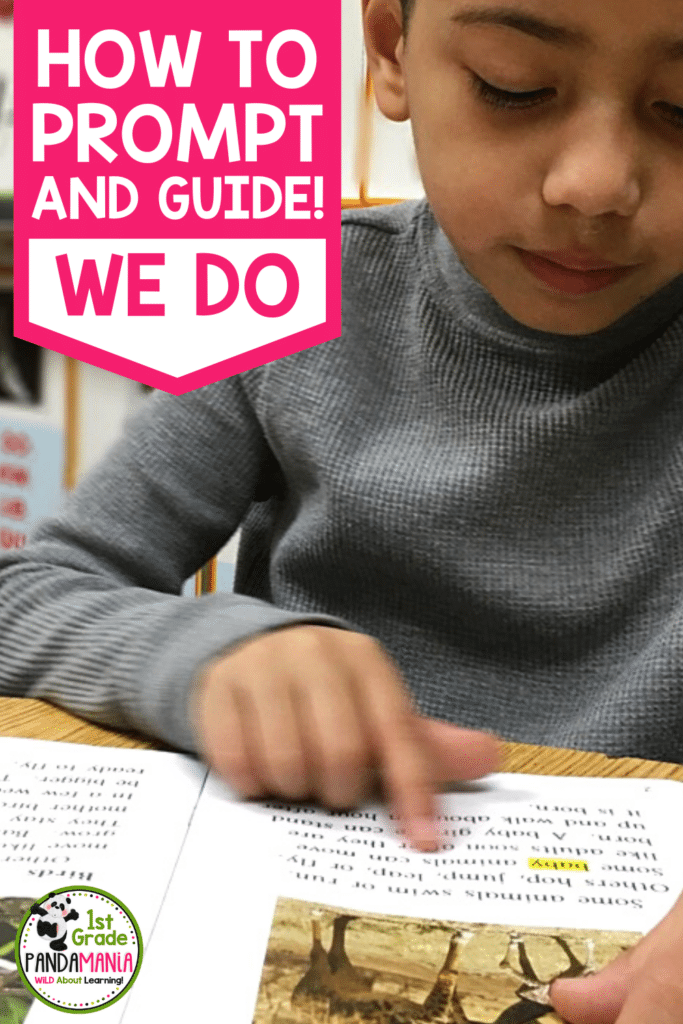
We Do Example 1: A group of 10 students who need more practice with decoding using a decodable reader gather in the front of the room.
Those students who:
- are ready to read the decodable on their own are partner reading the text.
- are above-level readers are partner reading differentiated text at their level.
Project the decodable reader on the whiteboard for all to see and follow along. The teacher prompts students to whisper read the page for individual practice.
Then point to the first word on the projected page and prompt, “Ready, read.” The teacher points to the words as students read, and teacher’s voice is off. If students need support with a word, the teacher will point to the beginning of that word and prompt, “Sound.” If the word is a sight word, the teacher prompts, “Sight word.”
Notice the following of the Prompt and Guide Method:
The teacher has already instructed the sight words and sounds for the week and students are now ready to practice with teacher guidance. These students are not quite ready to read this decodable on their own. Students who do not need as much guidance are partner reading the decodable or reading other text at their level.
The teacher allows students to whisper read, allowing students to practice before reading aloud. The teacher uses one or two-word prompts and turns teacher’s voice off. (When the teacher is reading the text with the students, students work less and learn less.)
We Do Example 2: First watch this quick 13-second video and we will discuss it further below.
Notice the Following:
- Students have previously learned the skill of differentiation of long/short vowels from the “I Do” lesson during whole group instruction at the carpet.
- They are practicing the skill.
- Teacher is guiding students to apply and practice this skill.
- Teacher uses quick one-word prompts where students are doing most of the thinking and the work. Teacher voice is mostly off. (When teacher is reading the text with the students, students work less and learn less.)
- Teacher can quickly identify and informally assess who is responding correctly and who needs more review.
- Students are learning through application.
When you use this prompt and guided method you can see how the teacher gradually releases the responsibility of learning on the student, the students learn MORE! Hopefully, the students have worked hard during their lessons and go home just as (or even a little more) worn out than their teacher!
I’d love to hear any comments or questions… please comment below!

